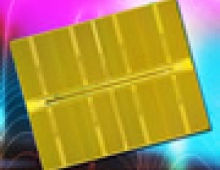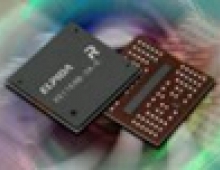
Kingston Tests DDR2 Memory at 866MHz
Kingston Hits Record Speed Heights with DDR2 Memory
Memory maker Kingston Technology has showcased DDR2 memory modules running at 866MHz, setting the worlds record for memory speed operation. The company, however, said it would not launch such high-speed products into mass market shortly, as currently only a few mainboards can handle even 750MHz memory clock-speed.
The memory module manufacturer showcased its ultra high speed DDR2 products during a press-event. Kingstons documents that were published by Legit Reviews web-site claim that 866MHz memory speed was achieved on ASUS P5AD2-E mainboard with memory voltage set to 1.95V, only 0.15V above normal level, with CL4 4-4-12 latency settings.
Additionally, Kingston demonstrated its HyperX KHX6000D2-series of memory modules rated to operate at 750MHz with CL4 4-4-12 timings and 1.9V voltage. The products do not feature any expensive and specially designed PCBs, but used standard JEDEC-certified print-circuit boards. The memory firm is expected to officially launch the HyperX PC2-6000 modules in 256MB, 512MB, and 1GB configurations in the next two weeks. Kingston said one of the problem with the launch of commercial was the absence of mainboards that can stably operate with 750MHz memory: so far only ASUS P5AD2-E can easily handle 750MHz DDR2, while even ABITs Fatal1ty i925XE cannot be fully stable with such speeds.
In late 2004 sources close to OCZ Technology, one of the leading companies on high-speed memory modules market, said it would release 733MHz and 800MHz DDR2 memory modules, but so far the company has not shipped such parts to market. One of the reasons can be instable operating of such modules on currently available mainbards.
DDR2 memory products utilize FBGA memory chips for better stability, thermal efficiency, enhanced scalability and better overclockability. Additionally, DDR2 components themselves have some micro-architectural changes from the original DDR specs, such as, Off-Chip Driver calibration (OCD), On-Die Termination (ODT) as well as larger 4-bit prefetch, additive latency, and enhanced registers. Two disadvantages DDR2 currently has are relaxed latencies compared to DDR memory which affects performance negatively as well as high pricing compared to DDR products. While the latter cannot really be tackled by memory module designers, the former issue can be compensated with rising core-clocks towards 667MHz and beyond.
From Xbit Laboratories

















